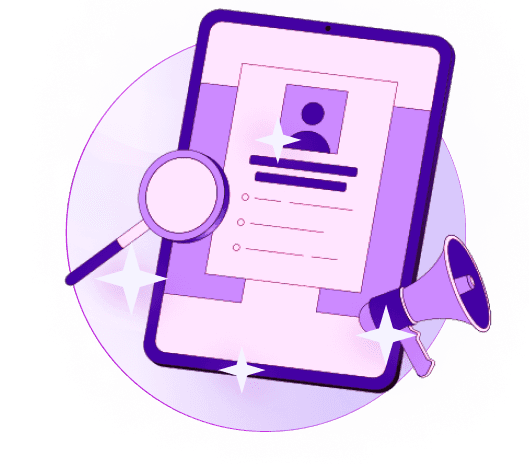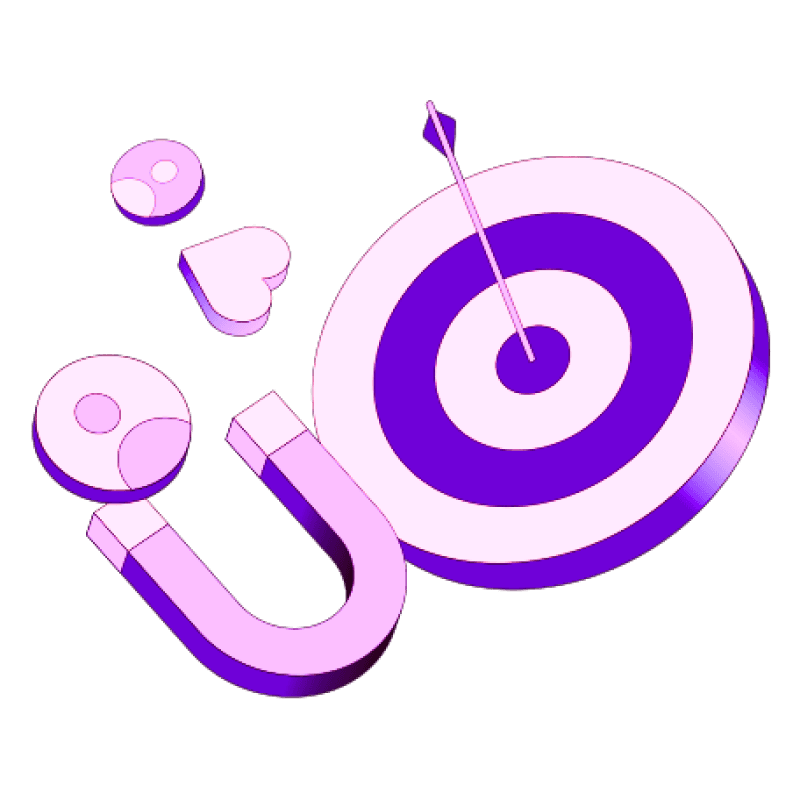Blogs
Articles

How to Use Sales Prospecting Automation to Boost Your Pipeline in 2025
The numbers are shocking - only 70% of sales reps send a single email to prospects, and 44% quit after one follow-up call.
Sales prospecting automation will determine survival, not just success in 2025. Traditional prospecting falls short as 96% of buyers now research products before talking to sales reps. Teams that use video in their outreach see remarkable results - 16% higher open rates and 26% more replies.
Let's dive into how sales prospecting automation can reshape your pipeline. You'll learn the best sales prospecting methods and discover the tools that will give you an edge in 2025. This piece covers everything you need, whether you're starting out in sales prospecting or want to boost your existing automation process.
What is Sales Prospecting Automation?
Sales prospecting automation uses technology to make finding and connecting with potential customers easier. Modern digital tools, data analytics, and AI now handle tasks that sales teams once did manually. Traditional prospecting relied on cold calling and manual lead generation, but automated systems now refine and speed up the entire process.
How automation fits into the sales prospecting process?
Sales teams use the prospecting phase to find prospects who match their buyer persona and need their products or services. Teams focus on outreach, email campaigns, lead generation, and follow-ups during this stage. The workflow combines smoothly with automation by taking care of routine tasks like:
Sending custom, personal emails to prospects
Creating follow-up sequences automatically
Matching prospects to sales reps by territory or industry
Finding promising leads through data analysis
Monitoring engagement with immediate updates
Automation tools process huge amounts of data to gather and analyze information accurately without mistakes or oversights. Sales teams can keep their prospecting activities going even with packed schedules full of meetings and urgent work.
Benefits of automating prospecting tasks
Automation makes a big difference in team performance. Companies that give their sales teams automation tools see 10-15% higher productivity. The automation of manual tasks frees up about 20% of a sales team's time for actual selling.
Sales professionals who use AI in prospecting say it makes their work better 85% of the time. They can build relationships instead of doing paperwork. This matters because sales teams spend 64% of their time on tasks unrelated to selling.
Other major benefits include:
Better lead quality through automated scoring and qualification
Regular prospect nurturing with triggered communications
Fewer mistakes and standardized data entry
Better team collaboration with centralized prospect data
Quick updates on prospect engagement and pipeline status
Sales teams using automation keep their pipeline healthy every week. They avoid the last-minute rush to close deals at quarter's end. This steady approach creates a more predictable sales process that lasts.
8 Automation Techniques to Boost Your Pipeline
Sales pipeline transformation needs specific automation techniques that optimize efficiency and results. Here are eight proven methods that will boost your prospecting efforts:
1. Use AI to identify high-potential leads
AI algorithms analyze big amounts of data to spot patterns in successful conversions. These systems assess customer data, past interactions, and behavioral signals to determine which leads will likely convert. Sales teams that use AI-powered lead scoring see an average 30% increase in conversion rates. AI prioritizes leads with the highest potential, which helps your team focus where they'll make the biggest difference.
2. Automate outreach with email and LinkedIn sequences
Modern prospecting tools help you build multi-touch campaigns that combine LinkedIn and email outreach in one cohesive sequence. To cite an instance, platforms like Outreachly automate both LinkedIn connections and email follow-ups. Reply.io creates conditional sequences that adapt based on prospect behavior. These tools automate profile views, skill endorsements, and post interactions to warm up prospects before your first direct outreach.
3. Personalize messages at scale using AI tools
Personalization has become essential today. AI creates individual-specific experiences at a scale impossible to achieve manually. Research shows AI-powered personalization can boost sales by up to 25% and customer satisfaction by up to 30%. Advanced personalization platforms generate custom content for thousands of recipients automatically. This includes personalized thumbnails, images, and text variations that address specific pain points.
4. Use CRM integrations for live data sync
Live CRM integration keeps your prospecting activities in sync across all systems. Marketo Engage provides bidirectional sync that moves lead data, contact information, and opportunity details between systems automatically. This creates a single source of truth that updates at speeds of up to 200,000 records per hour. Your sales teams always work with current information without manual data entry.
5. Use video automation to increase interaction
Video content boosts prospect interaction significantly. Hippo Video helps you send mass personalized prospecting videos that can increase response rates by 300%. Vidyard lets reps create AI-powered personalized video messages that stand out in busy inboxes. These platforms blend with existing sales tools to scale video outreach effortlessly.
6. Set up automated follow-up workflows
Your conversion rates become eight times higher with responses within five minutes. Automated follow-up workflows prevent leads from slipping away. Close CRM helps create multi-step sequences with automatic email and SMS follow-ups. HubSpot's workflows trigger follow-up messages based on specific actions like email opens or link clicks.
7. Track engagement with live analytics
Live analytics give immediate insights into prospect behavior. Salesloft Analytics brings together reporting from your entire tech stack. This helps you optimize engagement strategies with performance insights about your cadences, plays, and email templates. These systems track metrics like open rates, click-throughs, and response rates to show what works and what needs changes.
8. Use AI to optimize timing and channel selection
AI determines the best channel and timing for each prospect. Microsoft's Customer Insights watches how customers respond to different communication channels and picks the best option for each person. The AI model works independently to understand your goals and finds ways to optimize for them. This increases engagement and conversion chances.
Choosing the Right Tools for Prospecting
The right sales prospecting tools need a good look at your specific needs and workflow. The market in 2025 has many options that might feel overwhelming when you first look at them.
Top tools for automated sales prospecting
The most effective prospecting solutions fit into several key categories. Customer Relationship Management (CRM) systems like Salesforce, HubSpot, and Pipedrive are the foundation that unite client interactions and automate sales processes. Sales engagement platforms like Salesloft arrange daily tasks, analyze consumer data, and generate reports while keeping marketing and sales departments in sync.
Sales Intelligence tools like ZoomInfo, Cognism, and Apollo.io give you extensive B2B contact databases with verified information. ZoomInfo excels for large organizations that need verified contact data and intent signals. Cognism's phone-verified Diamond Data® can connect you with up to 87% of your prospects.
Persana and similar platforms help you create individual-specific experiences at scale that cut through inbox noise.
How to evaluate tools based on your sales process?
Take a full look at your existing sales process to spot bottlenecks and inefficiencies. Your next step should focus on data accuracy - poor data quality costs B2B companies $611 per contact record on average.
Think about these evaluation criteria:
Integration capabilities with your existing tech stack
Data quality and verification methods (look for 90%+ accuracy rates)
Your specific sales methodology's fit (high-volume outbound, account-based, or relationship-based)
Budget and ROI considerations, including both subscription fees and implementation costs
Sales teams typically use an average of 10 tools, and 94% want to unite their tech stacks to reduce complexity. All-in-one solutions often give you better value than putting together separate tools for finding leads, verifying details, and outreach.
Conclusion
Sales prospecting automation emerges as both a necessity and a chance in 2025. Modern buyers have changed the game - 96% of them research products before they talk to sales representatives. Traditional prospecting methods can't keep up with this ever-changing sales environment.
Eight automation techniques can reshape your sales pipeline. Your sales process becomes more efficient when AI-powered lead identification, automated outreach sequences, and customized messaging work together at scale. Smart follow-up workflows and CRM integrations ensure you won't miss any potential deals. Up-to-the-minute data analysis and AI-optimized timing make your approach even sharper.
Picking the right tools is vital to your success. Sales teams use an average of 10 different tools, though many want to combine their tech stacks. Your evaluation should consider integration capabilities, data accuracy, how methods line up, and overall ROI.
Numbers tell the story clearly - teams using automation see 10-15% increased efficiency and gain 20% more time to sell. Without doubt, this move lets sales professionals build meaningful relationships with prospects instead of getting buried in paperwork.
The sales world keeps changing. Sales prospecting automation gives you solid foundations that adapt to these changes. Your team will create a more predictable, eco-friendly pipeline that delivers results consistently by using these strategies now. Tomorrow's sales success belongs to those who blend human connection with technological efficiency - automated prospecting makes this possible.
Key Takeaways
Sales prospecting automation is transforming how teams build pipelines in 2025, offering practical solutions to overcome traditional prospecting limitations and drive measurable results.
• AI-powered lead identification increases conversion rates by 30% by analyzing behavioral patterns to prioritize high-potential prospects over manual sorting methods.
• Automated multi-channel sequences combining email and LinkedIn outreach eliminate the 70% of reps who give up after one touchpoint, maximizing engagement opportunities.
• Real-time CRM integration and automated follow-ups prevent lead loss since responding within five minutes increases conversion rates eight times compared to delayed responses.
• Teams using automation report 10-15% higher productivity and free up 20% more time for relationship-building by eliminating repetitive administrative tasks.
• Tool consolidation is essential as 94% of sales teams aim to reduce complexity from their average 10-tool tech stacks through integrated platforms.

Create Your Free Persana Account Today
Join 5000+ GTM leaders who are using Persana for their outbound needs.
How Persana increases your sales results
One of the most effective ways to ensure sales cycle consistency is by using AI-driven automation. A solution like Persana, and its AI SDR - Nia, helps you streamline significant parts of your sales process, including prospecting, outreach personalization, and follow-up.



